Mad Hedge Technology Letter
February 21, 2018
Fiat Lux
Featured Trade:
(HOW CISCO SYSTEMS GOT ITS MOJO BACK)
(CSCO), (JNPR), (NOK), (MSFT)

Mad Hedge Technology Letter
February 21, 2018
Fiat Lux
Featured Trade:
(HOW CISCO SYSTEMS GOT ITS MOJO BACK)
(CSCO), (JNPR), (NOK), (MSFT)

Studying the history of the 1849 California Gold Rush, there is not a single miner who is known today.
But the merchants who sold them shovels, food, and blue jeans have banks, hotels, and universities everywhere with names like Huntington, Stanford, Crocker, and Hopkins.
The modern-day Levi and shovel slingers come in the form of the internet infrastructure equipment manufacturer Cisco Systems (CSCO).
Not only does 85% of Internet traffic navigate across Cisco's Systems' powerful routers, Cisco is also run online, from product orders to intra staff circulation of information.
A myriad of tech companies will largely use Cisco's network infrastructure to keep their operations at the cutting edge.
Cisco (CSCO) is an American technology conglomerate headquartered in the heart of Silicon Valley, that builds, manufactures, and peddles networking hardware and telecommunications equipment.
Cisco (CSCO) has finally come in from the cold after a long, hard 2-year slog that finally saw them return to revenue growth.
Quarter after quarter, Cisco (CSCO) was prisoned in the penalty box for sticking with their fading legacy business of network hardware solutions.
Even accumulating a massive $67 billion in profits from abroad, the company failed to impress investor sentiment as revenue sequentially dipped.
How did Cisco (CSCO) get their mojo back?
Cisco finally adopted the SaaS (Service as a subscription) model that has been put to great use by all the high flyers. The one-time fee has been replaced by annual recurring charge generating a perpetual income stream.
The shift means 33% of income is now recurring subscription revenue, comprising 52% of the company's software sales. Cisco (CSCO) made US$5.5 billion from recurring software and subscription in the recent quarter.
Re-calibrating the business model has caused the deferred revenue segment to explode from a pedestrian 6%, just 10 quarters ago, to an impressive 33% now.
The progress has evoked broad based, positive investor sentiment and Cisco is just in the first phase of this secular trend.
Cisco hopes to transition as much business as it can to cloud-based subscriptions to enhance the customer experience.
One of the solutions offered is Cisco UCS Services for data centers. The data center aids business and has a spectacular future ahead of it. Services are aligned with business needs by unique network-based optimization. Cisco Data Center Services cuts operating costs while offering customers a high standard of service.
The plan for their subscription model is to offer pricing that is less than the one-time fee model, but offer premium add-ons to the base model. This incremental quality improvement will justify the recurring model also increase revenue per customer.
The advanced subscriptions will offer the newest cloud-based solutions that Cisco develops and gives impetus towards the SaaS model which has been a boon for the entire tech sector.
Data center was up double digits in the recent quarter, driven by server products as well as the HyperFlex offerings that drew in 2,400 new customers. Security tools have seen a rise in momentum, up 6% QOQ.
Total revenue was up 3% to $11.9 billion, and guidance growth for the next quarter was set at 3% to 5% on the back of the SaaS model, while maintaining vibrant operating margins of 31.7%, and a guided gross margin rate expected in the range of 63% to 64%. These are fantastic numbers.
The second part of the revitalization plan is the $66 billion of repatriated cash. $31 billion will go directly into share buybacks "over the next 18 to 24 months."
Cisco continues to prop up the dividend and remains committed to returning cash, thus exciting institutional investors. Cisco announced a $0.04 boost to the quarterly dividend to $0.33 per share, up 14% YOY.
Acquisitions are also a critical part of the overall strategy, as it always has been. Cloud-based Broadsoft was one of the latest companies scooped up by Cisco.
The company provides the building blocks for service providers to build cloud-based communications services such as voice, video, and web. BroadSoft was founded in 1998 and is headquartered in Maryland.
These little purchases may seem insignificant, but synergistic acquisitions added 80 basis points to the bottom line, and overall inorganic impact bumps up another 0.5 point to about 130 basis points.
Cisco (CSCO) will still be net cash positive of $10 billion to $12 billion and will scour the field for more acquisitions that will levitate growth and improve the product.
When you consider that Cisco's growth is occurring amid a backdrop of a robust domestic and global economy, and amid a trend for all companies to adopt a comprehensive digital blueprint then Cisco is perfectly placed to sell its services to cloud converts.
The digital bias is in the nascent phase, and once brick and mortar grapple with digitization and scalability or extinction, the trend will swiftly compound.
The modernization of the business model explains the surge in Cisco's share price from 2016. The shares have rocketed by an amazing 158% since then. Before that, they were stigmatized as a dying, archaic business that languished for years.
If investors cannot identify new growth drivers on the short-term horizon, they bail out. The two-pronged approach of their subscription model and reallocation capital plan will solidify the accelerating growth rhetoric. In other words, they now have a new "story" to sell.
Their peer group consists of Hewlett Packard (HPE), China's Huawei, Juniper Networks (JNPR), and Finland's Nokia (NOK). Microsoft (MSFT) and Cisco have demonstrated that tech dinosaurs can reinvent, reload, and revitalize a business model on the brink.
Such is the beauty of the digital economy where tinkering with a business model is just a few clicks away.
To learn more about Cisco Systems please click here.
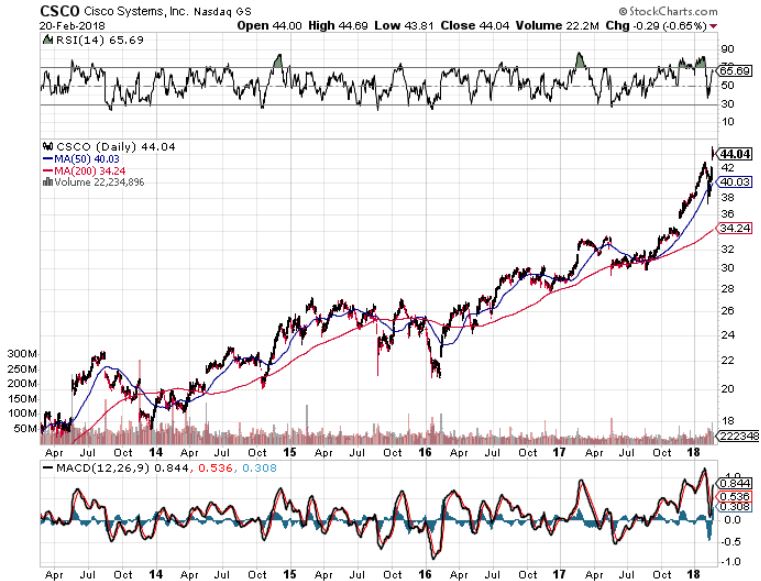
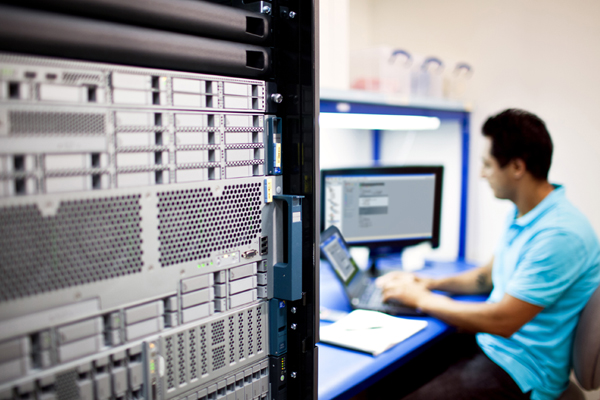
Mad Hedge Technology Letter
February 20, 2018
Fiat Lux
Featured Trade:
(MASAYOSHI SON'S VISION TO TAKE OVER THE WORLD),
(SFTBY), (BABA), (NVDA)

The wild west of the data wars is spawning into an all-out, gun slinging shoot out with a winner takes all mentality.
This slug fest is reminiscent of the unregulated 19th century American oil barons whose clout and complete control of the supply of oil fueled the industrial revolution that drove America's economy to the top of the global food chain.
Yes, data has become the oil of the 21st century. It is the oxygen of the next leg of the Internet revolution.
And there is one man moving early to stake out the premium real estate of our futures: Softbank's Masayoshi Son. His $100 million Softbank Vision Fund is not only creating waves in Silicon Valley, but tidal waves.
Many countries, like Iran, Saudi Arabia, and Russia, still rely on petroleum for the lion's share of government revenues. Even though oil is still integral to the growth of the global economy, there is a new sheriff in town: big data.
Cut it up anyway you want, data is simply information, the "zeros" and "ones" that make up the digital world. The information that commands mouthwatering premiums these days can be unraveled by computers.
Computer deciphered data can show behavioral and consumer trends in stark daylight, helping companies ferret out business strategies are proving immensely powerful.
There is an exponential hockey stick effect going on here. As the quantity of data accumulates, the more valuable it becomes.
The types of data being collected are personal data, transactional data, web data, and sensor data used for IoT (Internet of Things) products.
Who is the major player vacuuming up this data?
Masayoshi Son, the CEO of Softbank (SFTBY), an ethnic Korean who grew up in a small village in Japan. He transferred to the San Francisco Peninsula Serramonte High School as an ambitious youth and graduated in 3 weeks.
Son ventured on to UC Berkeley majoring in economics and computer science. He is one of the most dynamic people in the World and has amassed personal wealth of around $25 billion.
A few of his brilliant pre-emptive strikes were seed investing in Yahoo, creating Yahoo Japan, and $20 million for a stake in Alibaba (BABA) in 1999. These investments increased more than 100-fold in value.
Son is on a mission to own or control assets that are the linchpin to global growth nourished by Artificial Intelligence in selective industries such as transportation, food, work, medicine, and finance.
The anchor that ties all these firms together is the massive hordes of data they harvest, which are central to directing how future automated robots and machines perform.
His goal envisions the construction of responsive robots that will emerge as the cash cow in 2045. The construction, utilization, and high performance of these machines will be the key to his vision.
Instead of splurging for premium human data, investors will be competing for the best performing robots and the data derived from them. Accurate human data will provide the springboard to the machine data these robots will generate.
After the first generation of robots endow us with their first batch of data, all human data will be irrelevant. Human information is the test case that robots are founded on.
Once the first cohort of robot data comes to market, the 2nd generations of robots will be derived off the 1st generation of robots. Humans will become irrelevant.
Once you marry the treasure trove of data with A.I., the results will enter the realm of today's science fiction. Imagine being the first CEO to bring functional robots to mass market and how valuable that first batch of robot data would represent.
In short, Son is positioning himself to organically engineer the highest-grade robots catalyzing the next gap up in global competition.
This year, Son is on a global treasure hunt to meld together the most precise "big data" he requires to build his robot squadron that will take over the world.
The fight these days is acquiring the oxygen to power these non-human contraptions. Without pure oxygen, i.e. massive amounts of data, engineers will create faulty robots that under-perform.
Looking at the amalgam of companies in which Son has invested, it is difficult to find any rhyme or reason. That is until you find the commonalty of big data.
Son invested $200 million in "Plenty" in July 2017, a company developing indoor farms. If indoor farm data is not diverse enough, then how about the $300 million he showered on San Francisco dog-walking app called "Wag".
The biggest holding in the Softbank Vision Fund is Uber. Uber is ubiquitously known as a ride sharing company that shuttles passengers from spot A to spot B.
Sweetening the deal was a substantial discount the Vison Fund received on a private placement of Uber shares. Uber is now worth about $70 billion and may someday become a FANG in its own right.
Supplementing this transaction is the custom online map app Mapbox, founded as a competitor to Google Maps. Some of Mapbox's partners include Snapchat, Lonely Planet, and The Weather Channel.
Vision Fund's second largest position is ARM Holdings, which is an English semiconductor chip company that has carved out a large segment of the Android and laptop market.
They produce simple CPU's (central processing units) and much more advanced GPU's (graphics processing units) that are placed in smartphones, TV's, tablets, and computers.
Son has shelled out $8.2 billion through the Softbank Vision Fund and the remaining 75% stake is owned by parent company Softbank Group. ARM is one of the shining beacons of European tech and Softbank has pegged its future to its success.
Unsurprisingly, Nvidia (NVDA) is the 3rd largest weighting and the $5 billion Softbank investment into Nvidia (NVDA) represents a 4.9% stake in the company. The Nvidia commitment is logical considering ARM licenses their chip designs to Nvidia.
As autonomous vehicles will be one of the first benefactors from the cross pollination between big data and automation, these investments completely justify Son's long-term vision.
Son has also snapped up other ride sharing entities such as Didi Chuxing in China, Ola in India, Grab in Southeast Asia, and "99" in Brazil.
Some 31% of the global population is without Internet connectivity. Thus, Son bought OneWeb, which pioneers low cost, high quality satellites striving to grant Internet access for the people still without access. This maneuver will surely see his net data load increase.
In many of the Mad Hedge Technology Letters, we often offer readers the creme de la creme of public stock symbols, but this time it is different.
First, the major holdings in the Softbank vision fund, aside from Nvidia, are privately held companies that do not trade on any stock market.
However, it is very important to watch what he buys, as it gives insights into the best performing and fastest growing sub-sectors of technology.
Or you could just buy Softbank itself, whose shares have doubled over the past two years.
Son won't just flip these companies for a 30% or 50% profit. Tenfold, or hundred-fold gains are the order of the day.
In reality, Son's ultimate goal is to leach out the future aggregate data spewing out from his underlying portfolio and cross-pollinate it with A.I. and automation to revolutionize the world.
This year is a period of jockeying with other venture capitalists to positions themselves accordingly for the next 30, 40 and 50 years.
Welcome to the future.
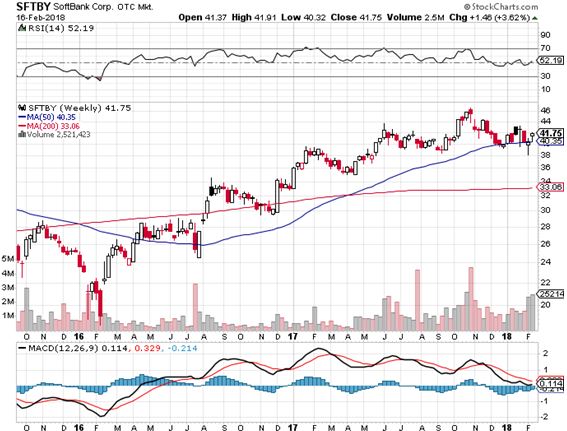
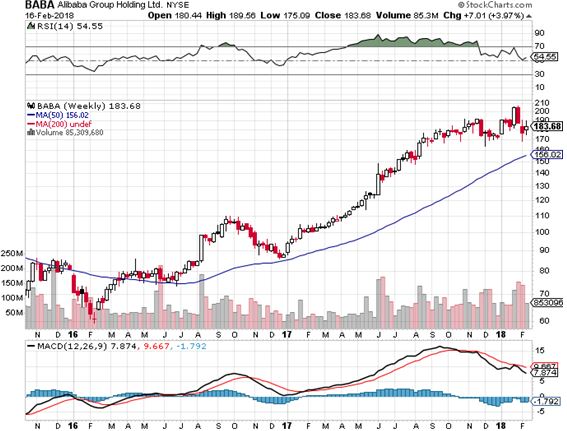
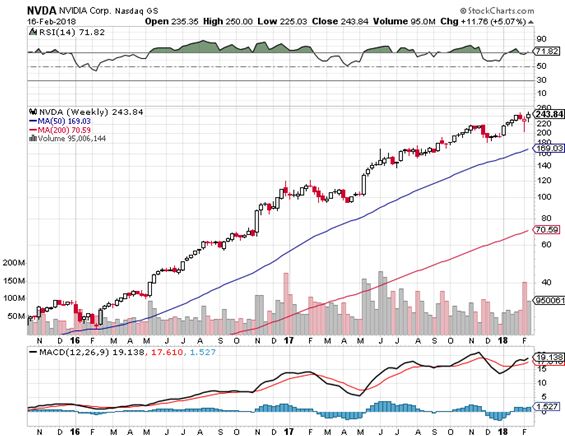
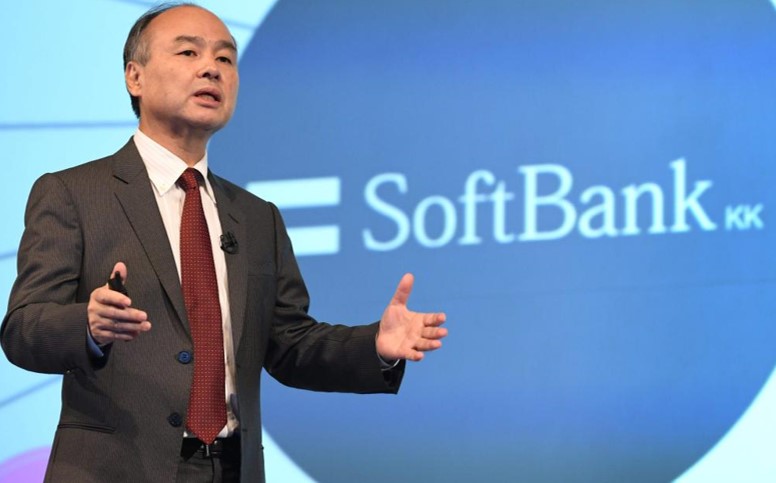
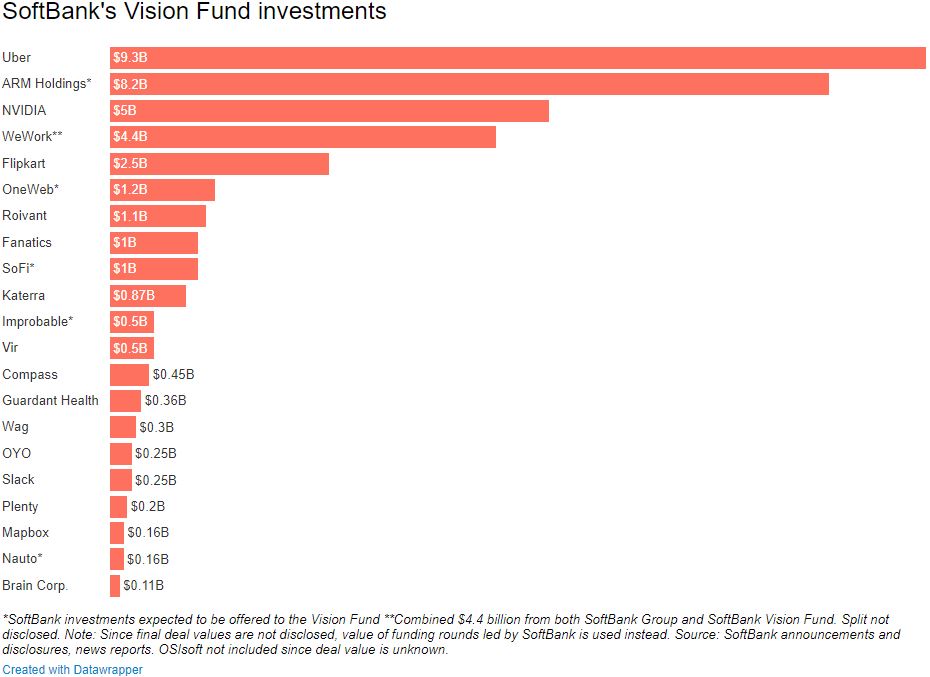
Mad Hedge Technology Letter
February 16, 2018
Fiat Lux
Featured Trade:
(HERE'S AN EASY WAY TO PLAY ARTIFICIAL INTELLIGENCE),
(BOTZ), (NVDA), (ISRG)

When John identifies a strategic exit point, he will send you an alert with specific trade information as to what security to sell, when to sell it, and at what price. Most often, it will be to TAKE PROFITS, but, on rare occasions, it will be to exercise a STOP LOSS at a predetermined price to adhere to strict risk management discipline. Read more
Mad Hedge Technology Letter
February 15, 2018
Fiat Lux
Featured Trade:
(GAMING YOUR WAY TO PROFITS WITH ACTIVISION)
(ATVI), (FB), (TTWO)

Lately, I have noticed an upsurge in questions about WWII from kids in their teens, and twenties, usually men.
Over the past 50 years, I have visited virtually every WWII battlefield, have read hundreds of books on the topic, and rank as an armchair general in my own right.
I also have has the pleasure of meeting the veterans of many armies, from a German ME 262 jet pilot, to my own Uncle Mitch, the first Medal of Honor winner of WWII.
The question for me always was, why are kids born a half century after the war suddenly interested in the subject. The answer is always the same: they heard about it on a video game. Gaming, in fact, is coming to shape these kids' understanding of history.
E-gaming is not typically pigeonholed as a highly attractive stock on Wall Street. But in 2018, the e-gaming phenomenon emphatically has legs.
People are spending more time playing video games globally with an accelerating pace.
The e-gaming sector is a far larger chunk of American economy that you would imagine.
Many American children under the age of 18 play video games for nearly 20 hours a week. This social abnormality has reached an extreme tipping point, where 10% of children are classified as obsessively addicted to these consoles.
The lucky firm procuring these satisfying yields are the video game producer, top dog Activision (ATVI).
Unzipping their quarterly data, investors can quickly grasp the vibrant breadth of this industry.
The most salient pillar of success is total net audience, which printed $385 million MAU/quarter-an increase of 1 million users from Q3 2017.
The business is split into 3 different segments: Activision along with subsidiaries Blizzard and King, which Activison bought in recent years. All are contributing unique gaming franchises which are immensely profitable.
Activision checked in at $1.33 billion of revenue for the quarter. Blizzard ratcheted up to $599 million, and King was on Blizzard's tail with $516 million.
The bread and butter of Activision is the gaming classic Call of Duty: World War II, which was the highest global grossing game in 2017. This franchise has been ranked #1 in the industry for eight of the last nine years.
Along with many brick and mortar businesses, e-gaming is stampeding into the online digital world. The industry is migrating in a consumer-led surge to full-game downloads instead of boxed purchases in stores.
This monetization method connects the gaming companies adjacent to the consumer with tightly bound synergies that cut out the middleman, Gamestop Corp (GME).
The skyward propulsion was also partially attributed to Activision's Blizzard and King upping their overall "daily time spent per user", exceeding 50 minutes. Daily usage per day is starting to reflect that of Facebook (FB), which is a mighty feat.
Activision capped off the most successful year in history, with a total operating income of over $1 billion and operating margin of over 38%.
Their pipeline includes World of Warcraft's Battle for Azeroth, expected to be released this summer.
Guidance was quite impressive, and Activision shelled out two blueprints depicting their plans to gather a head of steam.
The most profitable business is steered predominantly by Call of Duty's Live Ops package.
What are Live Ops? They are in-game purchases by the user. This has become the new normal in gaming, where players must buy items in order to stay ahead of the curve.
This method has proved extremely popular while pushing up the ROI/user.
The Live-Ops manifest in 3 forms:
Gacha - Popularized by Japanese capsule toy vending machines, the appeal of paying virtual currency for a chance to get an ultra-rare item has proven to be a sticky feature.
The objective is performance progress. Gamers are offered free or discounted gachas during the initial stages but must pay for higher tiered gacha that in return represent a higher-level score.
Online Competition - This includes competitive structures such as guilds, leagues, playoffs or leader-boards that will boost the retention rate. The core idea is exclusive competition with unique rewards.
One-time Events - Time sensitive events corral gamers into an exclusive venue, creating a forced spending environment to conflate spending with winning.
In-game offerings have been such a hit that the feature crossed the $1 billion threshold in Q4 2017, which comprised about 25% of total quarterly revenue.
Activision truly has the highest-quality downloadable content in 2017, including Zombies Chronicles for Call of Duty: Black Ops III, the top add-on service of the year for PlayStation.
Constructing stunning Live Ops features are a challenge for game studios, because Live Ops teams must build database servers that scale with the involvement of millions of hardcore gamers. Harmonizing these functions is a nightmare, but is highly effective if successful.
After Live Ops, the second stage of the blueprint is mobile execution. Mobile gaming has not been scaled to the extent of the PC and gaming console market. The mobile market is still in its infancy and gaming studios can capture the immense growth potential, especially in Asia.
Technology has progressed to the degree where Activision is able to triumphantly consummate this strategy. These two great initiatives will spur Activision to extreme heights.
The wild card is the Overwatch League that commenced late last year and is in its incubation stage. Overwatch is a new global e-gaming league that is televised in a traditional sporting-league format. The league reached 10 million unique viewers and almost 300,000 average viewer/minute in the first week.
The follow through, post week 1, was also exceptional, with viewership stabilized. The audience can access Amazon's Twitch platform to view these contests.
Activision has made a calculated bet that the "average joe" gamer will want to watch world-class caliber gamers perform as a spectator sport.
Activision plans to sell new expansion teams to an array of global cities, and if gaming maintains its appeal to the global youth, the league could potentially rival one of the physical sporting leagues in the United States. And yes, Activision intends to weave in its add-on features to these live encounters.
If you are keen on Activision's (ATVI) competitors, who also run healthy gaming franchises of their own, then have a look at Take-Two Interactive (TTWO), who hawk their legendary game, Grand Theft Auto or EA Sports- held up by the NFL Madden and FIFA soccer labels.
In short, Activison looks like a "BUY" here, and the recent correction has given us the gift of a fabulous entry point.
To visit Activision's website, please click here.
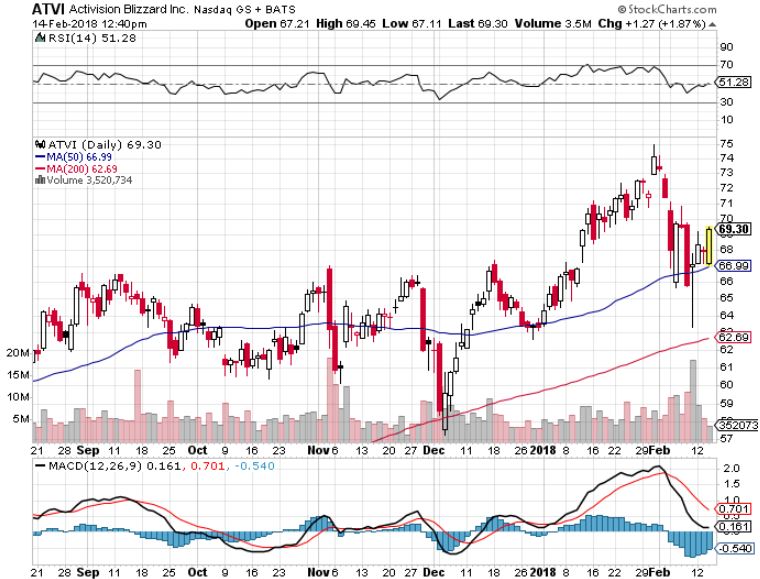
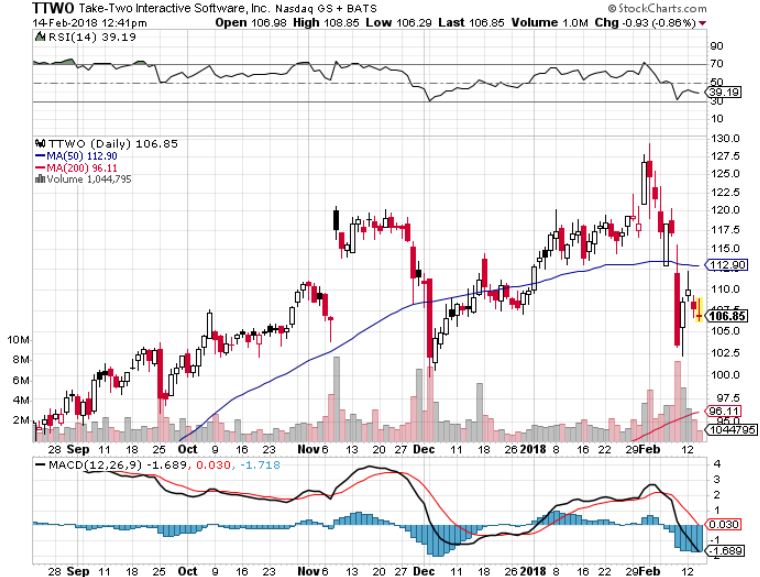
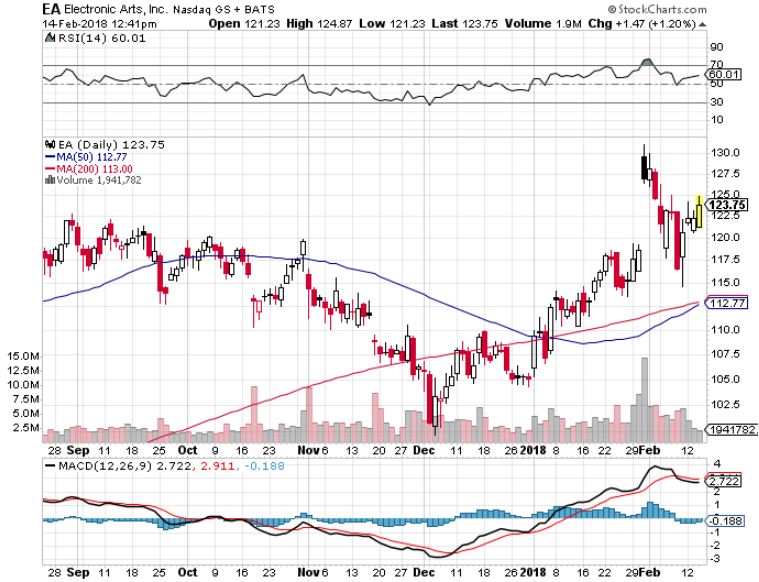
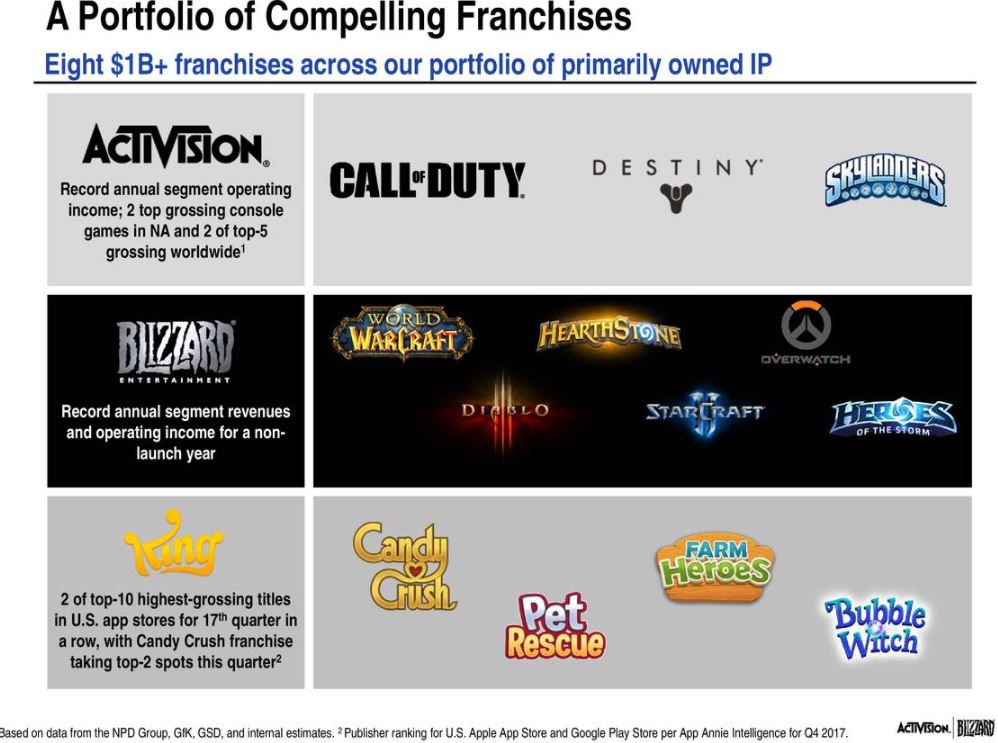

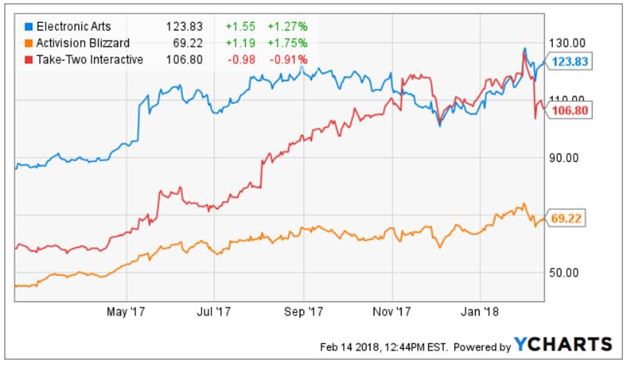

Mad Hedge Technology Letter
February 14, 2018
Fiat Lux
(SPECIAL BATTERY ISSUE)
Featured Trade:
(THE GREAT RACE FOR BATTERY TECHNOLOGY),
(TSLA), (GM), (BYDDF), (NSANNY), (SQM), (TM)

One hundred years from now, historians will probably date the beginning of the fall of the American Empire to 1986.
That is the year President Ronald Reagan ordered Jimmy Carter's solar panels torn down from the White House roof, and when Chinese Premier Deng Xiaoping launched his top secret 863 program to make his country a global technology leader.
 Is the End is Near for the US?
Is the End is Near for the US?The big question today is who will win one of the biggest opportunities of our generation?
Some 32 years later, the evidence that China is winning this final battle is everywhere. China dominates in windmill power, controls 97% of the world's rare earth supplies essential for modern electronics, is plunging ahead with clean coal, and boasts the world's most ambitious nuclear power program.
It is a dominant player in high-speed rail and is making serious moves into commercial and military aviation. It is also cleaning our clock in electric cars, with more than 30 low cost, emission free models coming to the market by the end of 2013.
Looking from a distance, one could conclude that China has already won the technology war.
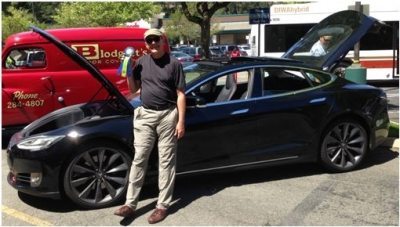
General Motors (GM) pitiful entrant in this sweepstakes, the Chevy Bolt, has utterly failed to reach the firm's sales targets. Still, I receive constant emails from drivers who say they absolute love the cars, and at $36,620, with dealer discounts it IS cheap.
This is all far more than a race to bring commercial products to the marketplace. At stake is nothing less than the viability of our two economic systems.
By setting national goals, providing unlimited funding, focusing scarce resources, and letting engineers run it all, China can orchestrate assaults on technical barriers and markets that planners here can only dream about.
And let's face it, economies of scale are possible in the Middle Kingdom that would be unimaginable in America.
 Nissan Leaf
Nissan LeafThe laissez faire, libertarian approach now in vogue in the US creates a lot of noise, but little progress. The Dotcom bust dried up substantial research and development funding for technology for a decade.
While China was ramping up clean coal research, president Bush was closing down ours.

Toyota Plug-In Prius
Mention government involvement in anything these days and you get a sour, skeptical look. But this ignores the indisputable verdict of history.
Most of the great leaps forward in US economic history were the product of massive government involvement. I'm thinking of the transcontinental railroad, the Panama Canal, Hoover Dam, the atomic bomb, and the interstate highway system.
All of these were far too big for a private company ever to consider. If the government had not funneled billions in today's dollars into early computer research, your laptop today would run on vacuum tubes, be as big as a skyscraper, and cost $100 million.
I mention all of this not because I have a fascination with obscure automotive technologies or inorganic chemistry (even though I do).
Long time readers of this letter have already made some serious money in the battery space. This is not pie in the sky stuff; this is where money is being made now.
I caught a 500% gain by hanging on to Warren Buffet's coat tails with an investment in the Middle Kingdom's Build Your Dreams (BYDFF).
I followed with a 250% profit in Chile's Sociedad Qimica Y Minera (SQM), the world's largest lithium producer. Tesla's own shares have been the top performer in the US market in 2014, up from $16.50 to $392.
These are not small numbers. I have been an advocate and an enabler of this technology for 40 years, and my obsession has only recently started to pay off big time.
We're not talking about a few niche products here.
The research boutique, HIS Insights, predicts that electric cars will take over 15% of the global car market, or 7.5 million units by 2025. Even with costs falling, that means the market will then be worth $225 billion.
Electric cars and their multitude of spin off technologies will become a dominant investment theme for the rest of our lives. Think of the auto industry in the 1920's. (TSLA), (BYDDF), and (SQM) are just the appetizers.
All of this effort is being expended to bring battery technology out of the 19th century and into the 21st.
The first crude electrical cell was invented by Italian Alessandro Volta in 1759, and Benjamin Franklin came up with the term battery after his experiments with brass keys and lightning. In 1859, Gaston Plant discovered the formula that powers the Energizer bunny today.
Further progress was not made until none other than Exxon developed the first lithium-ion battery in 1977. Then, oil prices crashed, and the company scrapped the program, a strategy misstep that was to become a familiar refrain.
Sony (SNE) took over the lead with nickel metal hydride technology, and owns the industry today, along with Chinese and South Korean competitors.
Expect to hear a lot about the number 1,600 in coming years. That is the amount of electrical energy in a liter (0.26 gallons), or kilogram of gasoline expressed in kilowatt-hours.
A one-kilogram lithium-ion battery using today's most advanced designs produces 200 KwH. Stretching the envelope, scientists might get that to 400 KwH in the near future.
But any freshman physics student can tell you that since electrical motors are four times more efficient than internal combustion ones, that is effective parity with gasoline.
Since no one has done any serious research on inorganic chemistry since the Manhattan project, until Elon Musk came along, the prospects for rapid advances are good.
A good rule of thumb is that costs will drop my half every four years. So Tesla S-1 battery that costs $30,000 four years ago, will run $15,000 today, and only $7,500 in 2022.
Per Kilowatt battery costs are dropping like a stone, from $1,000 a kWh in the Nissan Leaf I bought eight years ago to $200 kWh in my new Tesla S-1.
In fact, the Tesla, it is such a revolutionary product that the battery is only the eighth most important thing.
The additional savings that no one talks about is that an electric motor with only eleven moving parts requires no tune-ups for the life of the vehicle.
This compares to over 1,000 parts for a standard gas engine. You only rotate tires every 6,000 miles. That's because the motor runs at room temperature, compared to 500 degrees for a conventional engine, so the parts last forever.
Visit the Tesla factory, and you are struck by the fact that there are almost no people, just an army of German robots. Few parts mean fewer workers, and lower costs.
All of the parts are made at the Fremont, CA plant, eliminating logistical headaches, and more cost. By only selling the vehicle online, the expense of a huge dealer network is dispatched.
The US government rates the S-1 as the safest car every built, a fact that I personally tested with my own crash. Consumer Reports argues that it is the highest quality vehicle every manufactured.
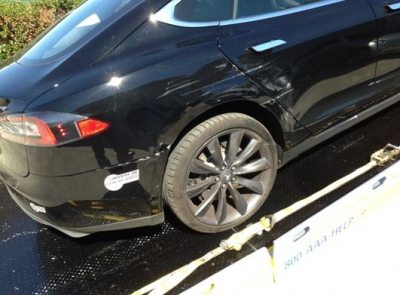
My Personal Crash Test
Indeed, the Tesla S-1 is already the most registered car in America's highest earning zip codes. Oh, and did I tell you that the car is totally cool?
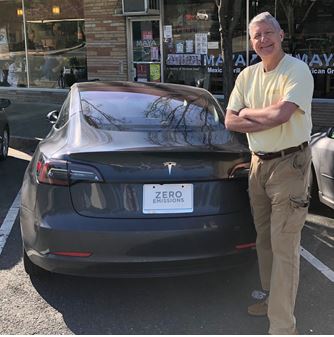
The New Tesla 3
Hence, the need for government subsidies to get private industry over the cost/production hump.
Nissan, Toyota, Tesla, and others are all betting their companies that further progress and economies of scale will drive that cost down to below $100 per kWh.
That will make electric cars cheaper than conventional hydrocarbon powered ones by a large margin. The global conversion to electric happens much faster than anyone thinks.
In a desperate attempt to play catch up, President Obama lavished money on alternative energy, virtually, since the day he arrived in office.
His original 2010 stimulus package included $167 billion for the industry, enough to move hundreds of projects out of college labs and into production.
However, in the ultimate irony, much of this money is going to foreign companies, since it is they who are closest to bringing commercially viable products to market. Look no further than South Korea's LG, which received $160 million to build batteries for the GM Volt.
Since then, all subsidies for electric cars have been eliminated by the tax bill passed in December.
Fortunately, the US, with its massively broad and deep basic research infrastructure, a large military research establishment (remember the old DARPA Net?), and dozens of still top rate universities, is in the best position to discover a breakthrough technology.
The Energy Department has financed the greatest burst in inorganic chemistry research in history, with top rate scientists pouring out of leading defense labs at Los Alamos, Lawrence Livermore, and Argonne National Labs.
There are newly funded teams around the country exploring opportunities in zinc-bromide, magnesium, and lithium sulfur batteries. A lot of excitement has been generated by lithium-air technology, as well as much controversy.
In the end, it may come down to whether our Chinese professors are smarter than their Chinese professors.
In 2007, the People's Republic took the unprecedented step of appointing Dr. Wan Gan as its Minister of Science and Technology, a brilliant Shanghai engineer and university president, without the benefit of membership in the communist party.
Battery development has been named a top national priority in China. It is all reminiscent of the 1960's missile race, when a huge NASA organization led by Dr. Werner Von Braun beat the Russians to the moon, proving our Germans were better than their Germans.
 Anything for a Green Card
Anything for a Green Card
Consumers were the ultimate winners of that face off as the profusion of technologies the space program fathered pushed standards of living up everywhere.
I bet that's how this contest ends as well. The only question is whether the operating instructions will come in English or Mandarin.
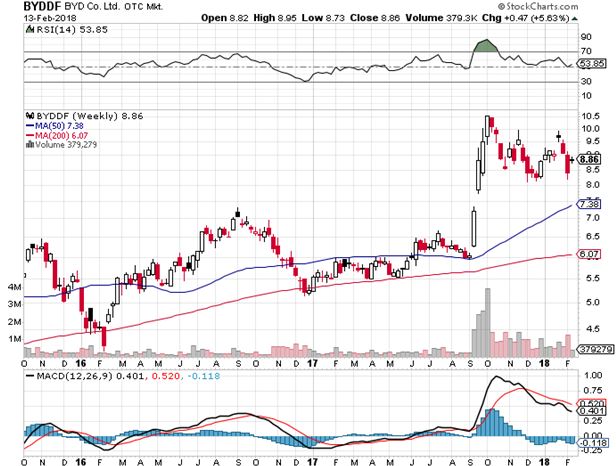
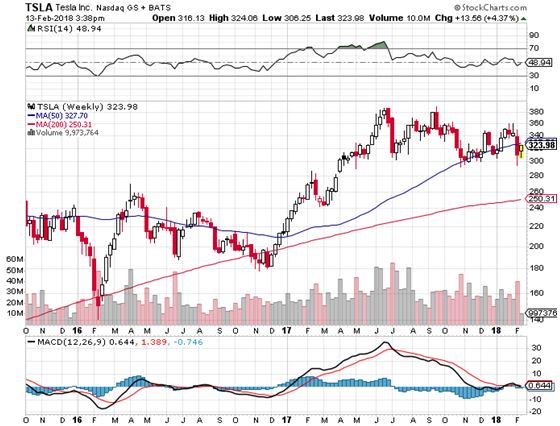
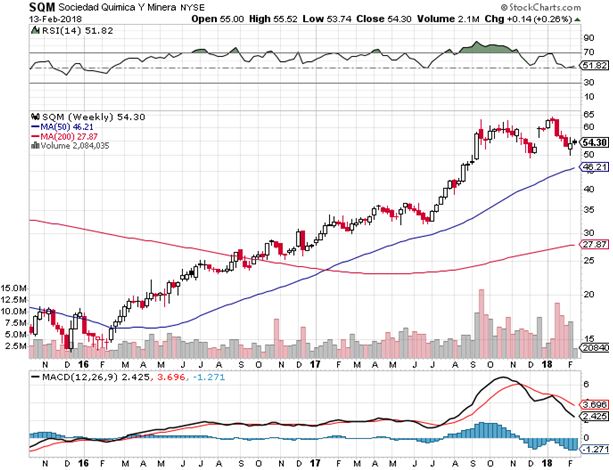



Legal Disclaimer
There is a very high degree of risk involved in trading. Past results are not indicative of future returns. MadHedgeFundTrader.com and all individuals affiliated with this site assume no responsibilities for your trading and investment results. The indicators, strategies, columns, articles and all other features are for educational purposes only and should not be construed as investment advice. Information for futures trading observations are obtained from sources believed to be reliable, but we do not warrant its completeness or accuracy, or warrant any results from the use of the information. Your use of the trading observations is entirely at your own risk and it is your sole responsibility to evaluate the accuracy, completeness and usefulness of the information. You must assess the risk of any trade with your broker and make your own independent decisions regarding any securities mentioned herein. Affiliates of MadHedgeFundTrader.com may have a position or effect transactions in the securities described herein (or options thereon) and/or otherwise employ trading strategies that may be consistent or inconsistent with the provided strategies.
This site uses cookies. By continuing to browse the site, you are agreeing to our use of cookies.
OKLearn moreWe may request cookies to be set on your device. We use cookies to let us know when you visit our websites, how you interact with us, to enrich your user experience, and to customize your relationship with our website.
Click on the different category headings to find out more. You can also change some of your preferences. Note that blocking some types of cookies may impact your experience on our websites and the services we are able to offer.
These cookies are strictly necessary to provide you with services available through our website and to use some of its features.
Because these cookies are strictly necessary to deliver the website, refuseing them will have impact how our site functions. You always can block or delete cookies by changing your browser settings and force blocking all cookies on this website. But this will always prompt you to accept/refuse cookies when revisiting our site.
We fully respect if you want to refuse cookies but to avoid asking you again and again kindly allow us to store a cookie for that. You are free to opt out any time or opt in for other cookies to get a better experience. If you refuse cookies we will remove all set cookies in our domain.
We provide you with a list of stored cookies on your computer in our domain so you can check what we stored. Due to security reasons we are not able to show or modify cookies from other domains. You can check these in your browser security settings.
These cookies collect information that is used either in aggregate form to help us understand how our website is being used or how effective our marketing campaigns are, or to help us customize our website and application for you in order to enhance your experience.
If you do not want that we track your visist to our site you can disable tracking in your browser here:
We also use different external services like Google Webfonts, Google Maps, and external Video providers. Since these providers may collect personal data like your IP address we allow you to block them here. Please be aware that this might heavily reduce the functionality and appearance of our site. Changes will take effect once you reload the page.
Google Webfont Settings:
Google Map Settings:
Vimeo and Youtube video embeds:
